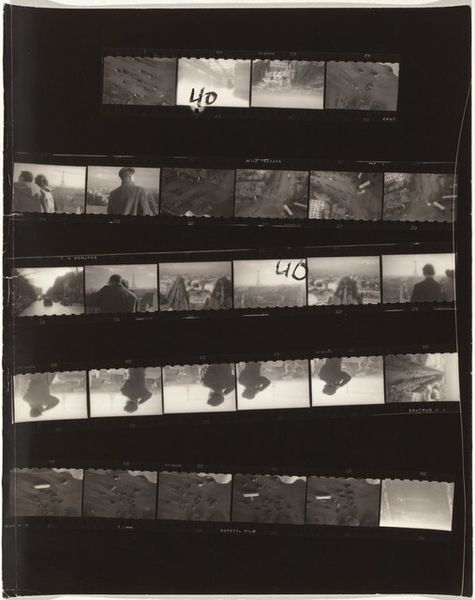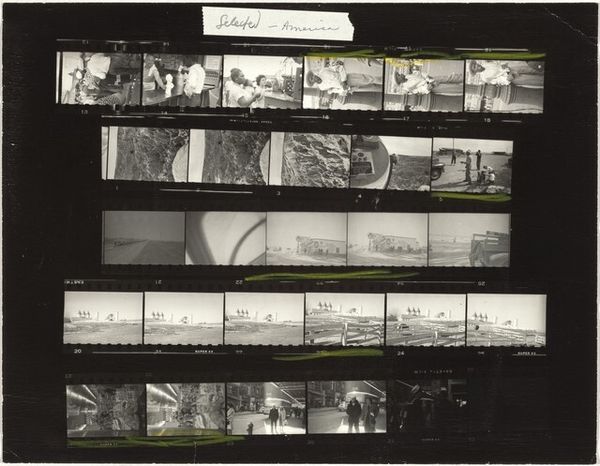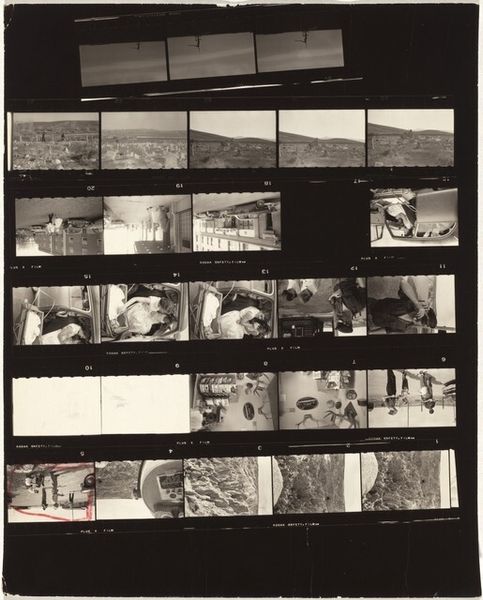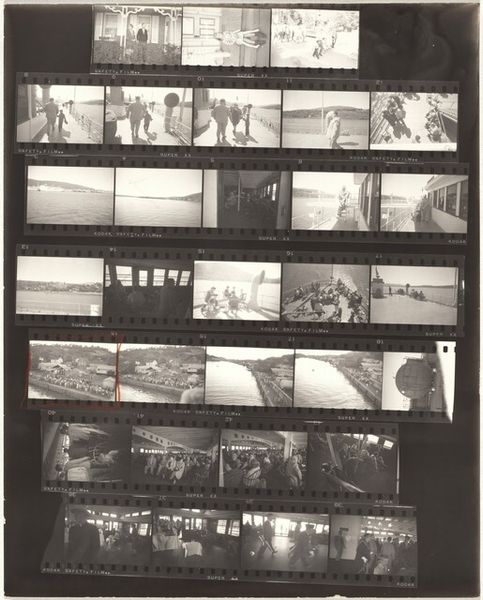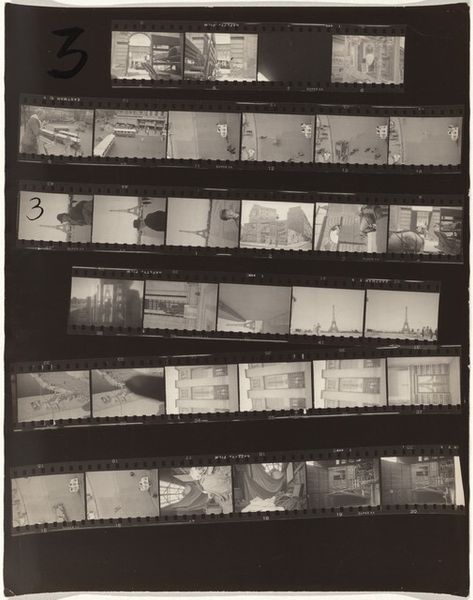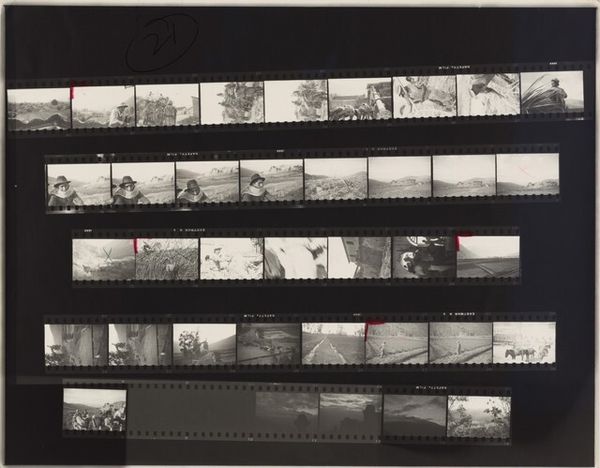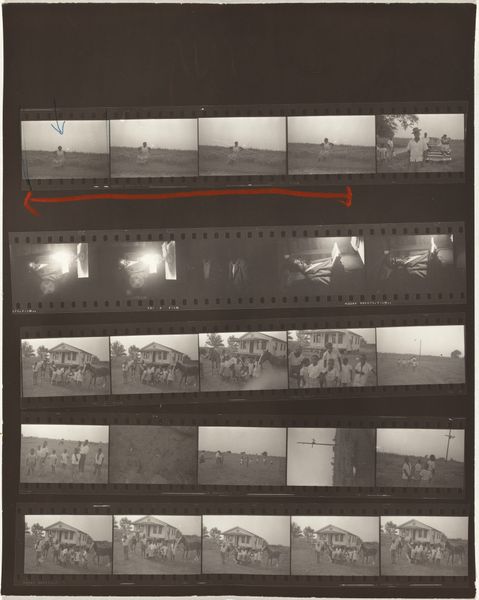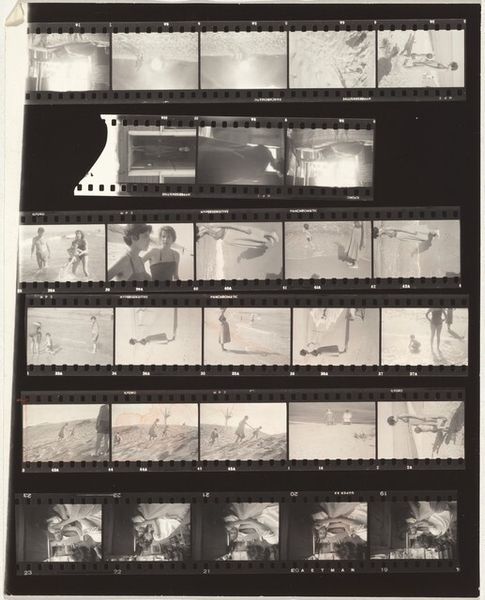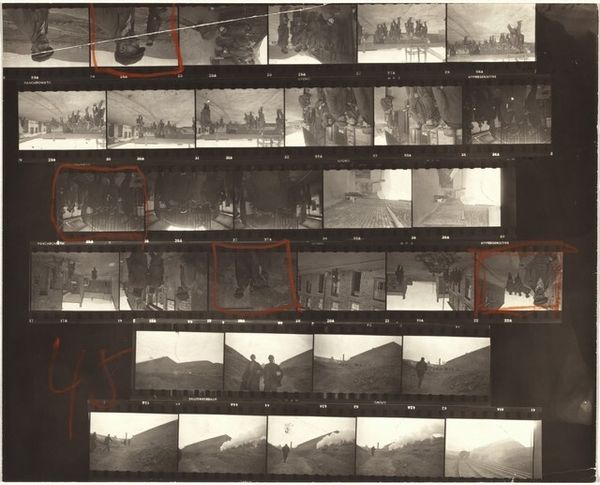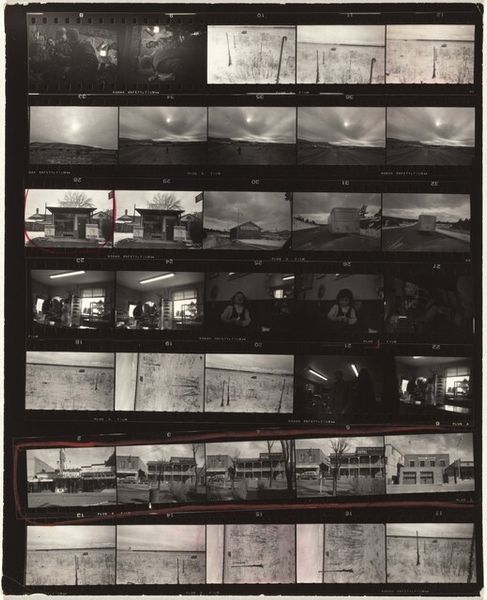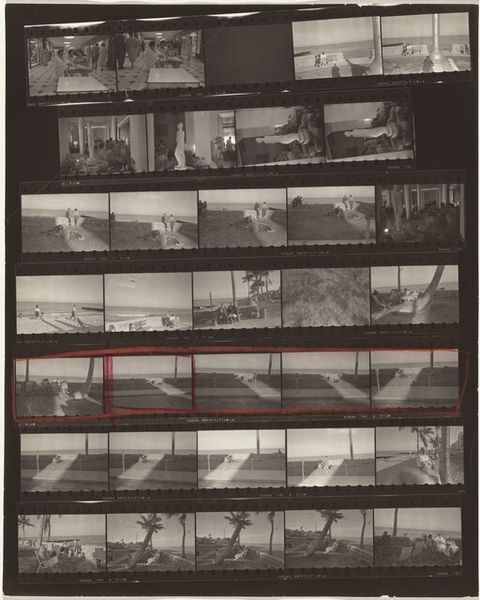
photography, gelatin-silver-print
#
film photography
#
landscape
#
street-photography
#
photography
#
gelatin-silver-print
#
realism
Dimensions: sheet: 25.3 x 20.4 cm (9 15/16 x 8 1/16 in.)
Copyright: National Gallery of Art: CC0 1.0
Curator: This gelatin-silver print is titled “Family and Ben Schultz--Southampton no number” by Robert Frank, from 1954. It shows several rows of undeveloped or discarded images. What’s your initial take? Editor: It feels fragmented, like glimpses into someone’s memory. The whole contact sheet laid out like this makes me think about process, the way a photographer sees and selects from their work. It seems so deliberate. Curator: Absolutely. I'm drawn to how the contact sheet format itself becomes symbolic, the red markings over the images suggesting decisions and editing—the layers of intentionality, choosing what to show versus what to hide. And look how those markings become part of the photograph in this new setting. Editor: Yes, and considering the time it was made, that darkroom process must have been laborious, highlighting the physical nature of the photographic act before digital means of reproduction became ubiquitous. How the material reality impacts meaning. I am thinking of Walter Benjamin. Curator: Definitely. But isn’t it more than a purely documentary glimpse into Frank's method? Those chosen shots offer an American reality of leisure and domestic life, through an immigrant lens. The discarded photos show some possible alternative routes he could have taken. But the family—whether blood or chosen—stands out. Editor: It makes one consider consumer culture and the burgeoning middle class in postwar America. What materials they are buying and consuming. The car in this image is the icon, not so much a sentimental reading as one of material conditions. The automobile represented mobility, freedom, aspiration – accessible to a broad spectrum of people. Curator: A fair point. The automobile itself functions almost like a secular cathedral, right? Enclosing and defining family experience. Still, seeing that film roll also underlines how we tell stories through pictures—and the gaps we leave behind as much as the fragments we save. Editor: Well, what resonates for me most powerfully is precisely its insistence on materiality, labor, the physical process by which meaning is manufactured in images and what that has to do with the social context in which images are made and used. Curator: Ultimately, this gelatin-silver print becomes its own narrative—the discarded mingling with the promising—an emotional testament to Frank’s process that supersedes the purely mechanical reproduction of life through photographic technologies. Editor: Agreed, and even that narrative emphasizes how meaning comes out of material decisions in the darkroom as much as being out "on the road", camera in hand, shooting in real time. It is how both shape meaning together.
Comments
No comments
Be the first to comment and join the conversation on the ultimate creative platform.
